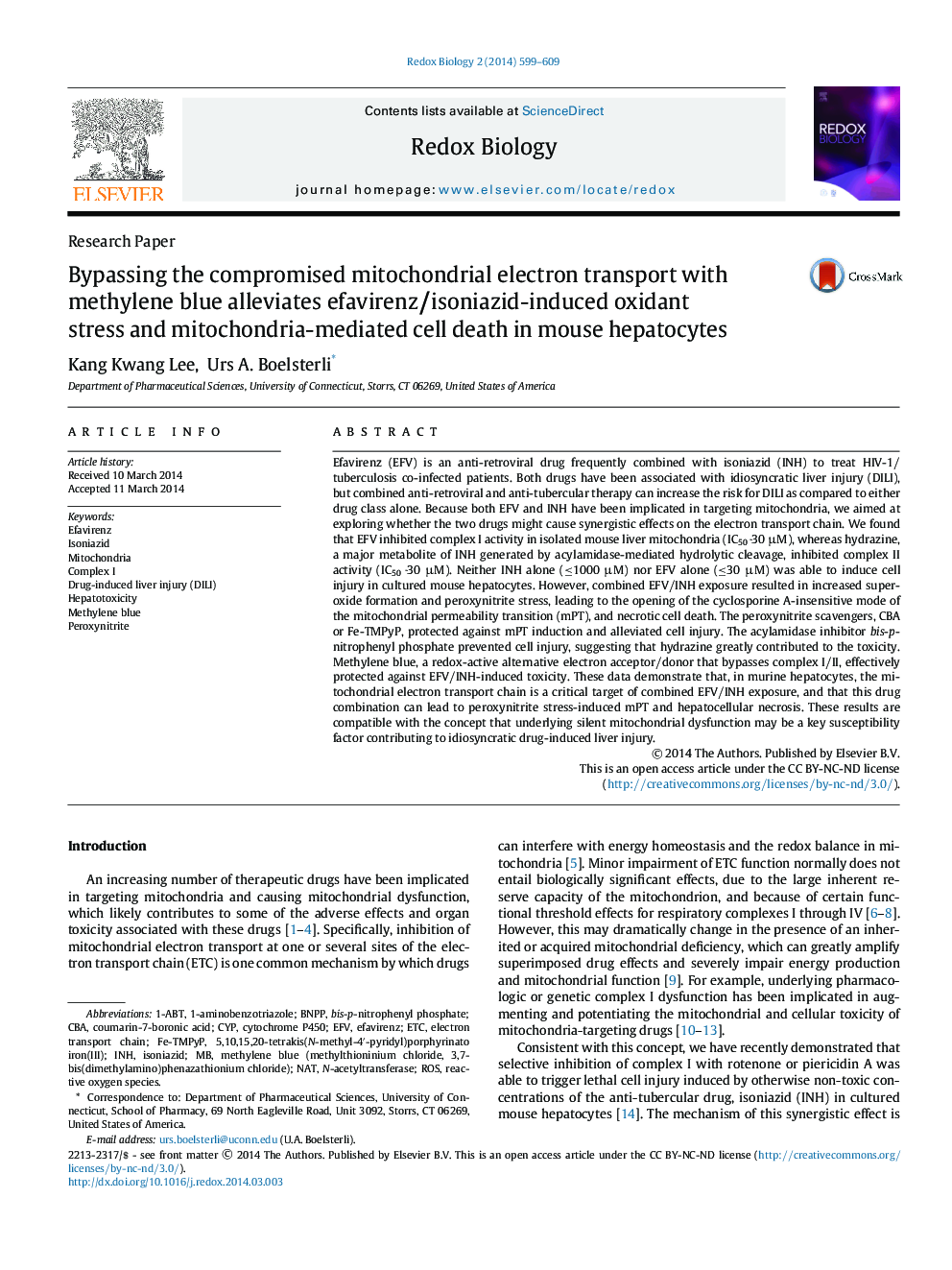| کد مقاله | کد نشریه | سال انتشار | مقاله انگلیسی | نسخه تمام متن |
|---|---|---|---|---|
| 1923044 | 1535848 | 2014 | 11 صفحه PDF | دانلود رایگان |
• We model efavirenz (EFV) and isoniazid (INH) hepatotoxicity in mouse hepatocytes.
• We find that EFV inhibits mitochondrial complex I, hydrazine inhibits complex II.
• Co-exposure to EFV/INH causes peroxynitrite stress and induces the mPT.
• Methylene blue bypasses complex I/II and protects from cell death.
• Mitochondrial ETC impairment is critical in EFV/INH liver injury.
Efavirenz (EFV) is an anti-retroviral drug frequently combined with isoniazid (INH) to treat HIV-1/tuberculosis co-infected patients. Both drugs have been associated with idiosyncratic liver injury (DILI), but combined anti-retroviral and anti-tubercular therapy can increase the risk for DILI as compared to either drug class alone. Because both EFV and INH have been implicated in targeting mitochondria, we aimed at exploring whether the two drugs might cause synergistic effects on the electron transport chain. We found that EFV inhibited complex I activity in isolated mouse liver mitochondria (IC50 ˜30 μM), whereas hydrazine, a major metabolite of INH generated by acylamidase-mediated hydrolytic cleavage, inhibited complex II activity (IC50 ˜30 μM). Neither INH alone (≤1000 μM) nor EFV alone (≤30 μM) was able to induce cell injury in cultured mouse hepatocytes. However, combined EFV/INH exposure resulted in increased superoxide formation and peroxynitrite stress, leading to the opening of the cyclosporine A-insensitive mode of the mitochondrial permeability transition (mPT), and necrotic cell death. The peroxynitrite scavengers, CBA or Fe-TMPyP, protected against mPT induction and alleviated cell injury. The acylamidase inhibitor bis-p-nitrophenyl phosphate prevented cell injury, suggesting that hydrazine greatly contributed to the toxicity. Methylene blue, a redox-active alternative electron acceptor/donor that bypasses complex I/II, effectively protected against EFV/INH-induced toxicity. These data demonstrate that, in murine hepatocytes, the mitochondrial electron transport chain is a critical target of combined EFV/INH exposure, and that this drug combination can lead to peroxynitrite stress-induced mPT and hepatocellular necrosis. These results are compatible with the concept that underlying silent mitochondrial dysfunction may be a key susceptibility factor contributing to idiosyncratic drug-induced liver injury.
Figure optionsDownload as PowerPoint slide
Journal: Redox Biology - Volume 2, 2014, Pages 599–609
